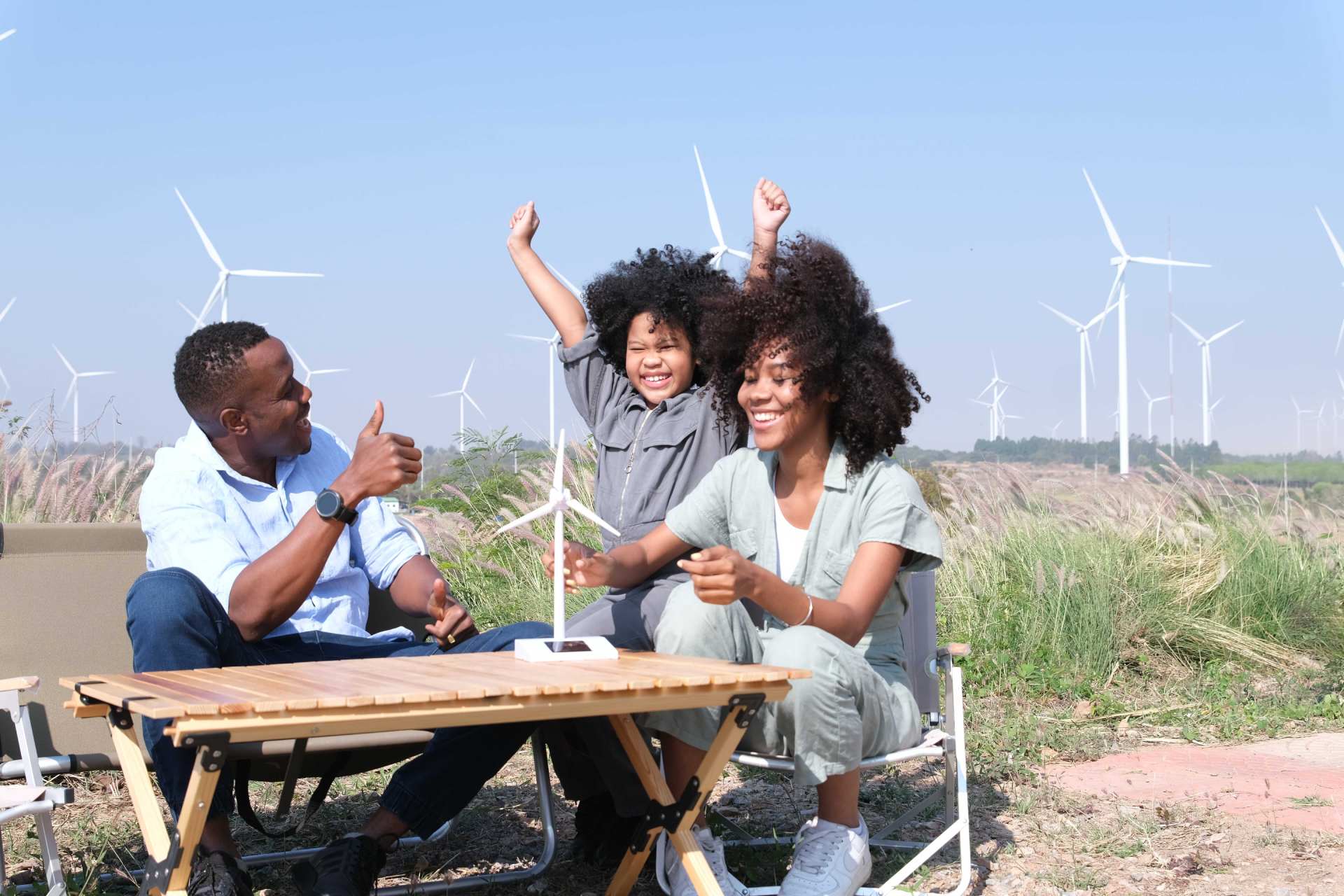STEM Activities Renewable Energy: Powering the Future Through Exploration
September 23, 2024 / Heather Reyes

In recent years, rising temperatures have frequently exacerbated wildfires, polar ice caps have been melting at an accelerated rate threatening coastal communities, ocean acidification has increased, and wildlife is struggling to adapt to the impacts on ecosystems and food webs.
The need to transition to sustainable energy sources is more urgent than ever, but what can we do?
As Greta Thunberg says, nobody is too small to make a big difference. In England, schools emit over 10 million tons of carbon annually. If we can start raising awareness or reducing carbon emissions from schools and children, we can make a huge impact.
However, explaining renewable energy to children is not an easy task. How can we make abstract concepts concrete, fun, and easier for children to understand? One effective approach is through STEM activities focused on renewable energy. These engaging activities inspire children's scientific curiosity and social responsibility, empowering them to explore a sustainable future while having fun learning about the importance of clean energy.
What is Renewable Energy?
Renewable energy comes from natural, sustainable resources. They can be used repeatedly, which means we will never run out of them. Unlike fossil fuels such as coal, oil, and natural gas, they do not release carbon dioxide into the atmosphere, making them considered better energy sources for the earth and human society. Some examples of renewable energy include:
Solar Energy
Solar energy is radiation energy produced by the sun. Every day, the sun radiates enormous amounts of energy. Solar collectors are one way to collect heat from the sun. A closed car on a sunny day acts like a solar collector. When sunlight passes through the car's glass windows, it is absorbed by the car's seat covers, walls, and floor. The absorbed light turns into heat. The car's glass windows let light in but don't let all the heat out. This is also why greenhouses are so effective and stay warm all year round.
Wind Energy
Wind is caused by uneven heating of the Earth's surface by the sun. For example, during the day, the air above land heats up faster than the air over water surfaces. Warm air expands and rises, and heavier, cooler air rushes in to replace it, forming wind. At night, the wind direction reverses. This is caused by land and water absorbing solar heat at different rates. Wind energy is converted into mechanical or electrical energy through wind turbines - those giant windmills.
Hydropower
All objects and materials have potential energy when they leave the ground due to gravity. When these objects fall back to the ground, potential energy is converted into kinetic energy, which is mainly what hydropower utilizes. Generally, the greater the water flow and the higher the fall, the more electricity a hydropower plant can generate. In hydroelectric power stations, the potential energy of water pushes and rotates the turbine blades, which in turn drives generators to produce electricity.
Geothermal Energy
This is heat from within the Earth. It's a renewable energy source because heat is continuously produced inside the Earth. People use geothermal energy for bathing, heating buildings, and generating electricity. It's like the Earth's natural "oven," and we use the hot water and steam from it to generate power.
Exploring Renewable Energy Through Hands-on STEM Activities
Let's try some hands-on STEM activities related to renewable energy to help children explore interesting real-world applications of renewable energy!
1. DIY Solar Oven
Do you know how to use energy from nature to cook food? Make your own solar oven! This is a low-cost, renewable technology. In this STEM activity, you'll make your own simple solar oven using a pizza box to collect sunlight and cook delicious dishes.
If you want to explore this STEM activity further, the Solar Oven STEAM Box would be a great choice. The box includes numerous hands-on projects and creative applications for solar ovens. Children will also systematically learn about how solar ovens work, solar-powered marine life, the origin of energy, energy in our lives, solar thermal energy, and other diverse scientific content through reading the accompanying science magazine.
Can you think of other ways to use solar energy? Have you seen any devices or products in your life that use solar power? Click to see this solar-powered Christmas cottage and see how to incorporate renewable energy concepts into your Christmas creativity. It can automatically charge in well-lit areas during the day and shine at night.
2. Build a Solar Updraft Tower
Have you ever been sunburned? If so, you know how powerful the sun's heat can be! You may have heard of solar cells, but have you heard of solar updraft towers? These very simple structures use the sun to heat air, which then powers turbines inside the tower. In this STEM activity, you'll build one of these towers yourself.
3. Find the Best Windmill Design
Did you know? The UK has the world's largest offshore wind farm. In 2023, wind power accounted for nearly 30% of the UK's total electricity generation. When you turn on a light bulb at home, that beam of light is very likely to come from a breeze at sea! Believe it or not, the wind turbines we use today are based on designs from over 4,000 years ago! In this STEM activity, we'll explore different turbine designs by testing windmills and learning about the factors that affect their performance.
4. Make Your Own Water Wheel Prototype
Besides the everyday uses of water, can you think of other uses for water? Try this fun activity to build your own water wheel prototype and see how water power can drive various things. This is a simple prototype of a small hydroelectric generator that can be made at home using simple materials.
5. Geothermal Energy Simulation Experiment
The temperature inside the Earth can reach 5000 degrees Celsius - this heat can be used to generate a lot of energy on the surface! Geothermal energy utilizes the heat from inside the Earth. We can simulate this energy through some simple STEM activities.
You can also explore the concept of geothermal energy by making a baking soda and vinegar "fountain". This fun experiment simulates how geothermal energy produces eruptions, just like natural geysers.
Why is Exploring Renewable Energy So Important for Children?
Using renewable energy helps slow down climate change and protect natural resources. By using solar panels, wind turbines, or hydroelectric systems, we can reduce our dependence on fossil fuels and lessen the burden on the Earth's environment.
By exploring renewable energy STEM activities, children will gain a deeper understanding of sustainable development and different forms of energy. Understanding these issues from a young age helps increase their sense of social responsibility and environmental awareness, contributing to creating a sustainable world in the future.
Other Resources
Here are some helpful resources and links where educators can find inspiration to bring renewable energy themes into the classroom. Many activities are also great for parents to explore at home with their children.
Energy Quest: EngineeringUK's "Energy Quest" is a curriculum-related project aimed at encouraging young people to learn about sustainable energy and related engineering careers. It provides free workshop resources for school teachers.
Subject to Climate: Offers detailed K2-K12 renewable energy lesson plans to help teachers bring engaging lessons into the classroom.
Twinkl: Provides rich curriculum resources from 0 to 14+ years old. Both school teachers and home educators can find plenty of inspiration and resources here.
Stem Learning: Offers a collection of resources compiled for Design and Technology GCSE to support teaching about renewable energy storage and generation.
Practical Action: Provides a wealth of free STEM resources and tools for schools and home learning, focusing children on real-world issues including climate change, renewable energy, food security, and disaster preparedness.
NASA Climate Kids: Offers interactive resources and information about climate change and Earth science. Through games, videos, and educational activities, it helps young people understand the scientific principles of climate change and its impact on Earth.
Instructables: Provides various DIY renewable energy generation projects, such as wind, solar, hydropower, biogas, etc.
Follow the UK Department of Energy or World Resource Instagram accounts to learn about the latest projects and inspiration for renewable energy technologies.
Empowering the Next Generation of Renewable Energy Advocates
By exploring STEM activities related to renewable energy, we can spark children's curiosity and sense of social responsibility. When they learn how to harness renewable energy sources like the sun, wind, and water, they're not just learning science; they're laying the foundation for their future. At the same time, promoting renewable energy helps ensure energy security and drive technological innovation.
Exploring STEM Boxes related to renewable energy can help parents and children easily embark on this green energy adventure. We provide all the necessary creativity, concepts, materials, and science magazines, so you don't need any extra preparation.
A greener, cleaner world requires our collective efforts. Let's start now by inspiring the next generation of renewable energy advocates through Tinkerer STEAM Boxes, helping them become innovators who will change the future.









